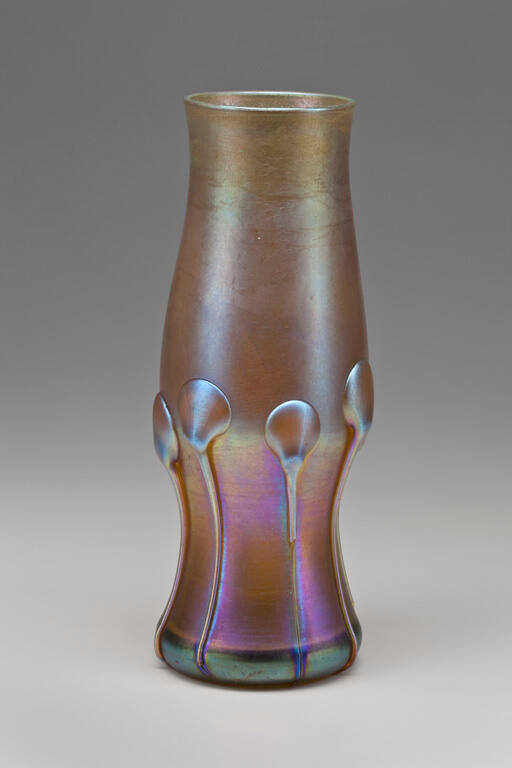
Object Details
Artist
Louis Comfort Tiffany
Date
ca. 1894
Medium
Glass
Dimensions
8 1/2 x 3 inches (21.6 x 7.6 cm)
Credit Line
Edythe de Lorenzi CollectionBequest of Otto de Lorenzi
Object
Number
64.0904
BRIEF DESCRIPTIONThis is a tall Tiffany vase made of iridescent gold glass with round prunts (applie(…)
BRIEF DESCRIPTIONThis is a tall Tiffany vase made of iridescent gold glass with round prunts (applied blobs of glass) along the shoulder that trail down to the base.WHERE WAS IT MADE?Tiffany glass was made at the Tiffany Glass Furnaces in Corona, located in Queens, New York.WHO WAS THE ARTIST?Louis Comfort Tiffany was the eldest son of Charles L. Tiffany, founder of Tiffany & Company, the New York jeweler. Tiffany was trained as a painter, studying with both George Inness and Samuel Coleman in New York and Leon Bailly in Paris. He eventually turned his attention to decorative arts and began experimenting with glass-making techniques in 1875. After success with stained glass windows and mosaics, Tiffany established the Tiffany Glass Company in 1885 and began devoting production to one-of-a-kind blown glass art objects. He soon became one of America’s most prolific designers, providing furniture, wallcoverings, textiles, jewelry and glass to some of society’s most important citizens.HOW WAS IT MADE?Like most Tiffany vases, this vase was created using a blowpipe. The iridescence of the glass was achieved by a process developed in the early 19th century in which metallic substances were either added to the batch when forming the vessel, or the surface of the vessel was coated with metallic oxides like stannous chloride or lead chloride before firing. Different oxides were known to produce different pigments.The raised drops of glass were applied separately, after the form was blown. Do they remind you of anything?WHY DOES IT LOOK LIKE THIS?This vase is an example of Tiffany’s Favrile glass. In 1894, Tiffany patented his iridescent glass under the name Favrile. The word Favrile is derived from the Old English fabrile, meaning hand-wrought. Tiffany design was inspired by glass from ancient Rome and the Islamic world, Venice and Bohemia. Tiffany combined his talent as a colorist, naturalist, and designer with his experimentations on blown glass surfaces. Vessels were fumed with metallic oxides to achieve iridescence.To see other examples of Tiffany’s Favrile glass in the Johnson Museum’s collection, search for object numbers 57.072, 57.080, 57.088, 57.097, 57.106, 64.0840, 64.0841, 64.0842, 64.0843, 64.0850, 64.0865, 64.0875, 64.0879, 64.0885, 64.0889, 64.0898, 99.078.118 a,b, and 2001.075.003 in the keyword search box.












